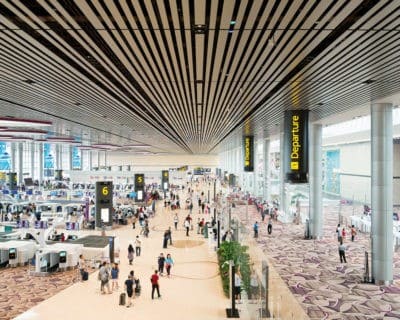
Providing greater visibility and clear lines of sight helps to make Changi Terminal 4 more welcoming to visitors
As jet travel has become more common, it has also often become an ordeal as passengers scurry through security drills, and rush through increasingly crowded concourses to catch their planes on time.
When Changi Airport Group, which manages Singapore’s international airport, decided in 2012 that it was time to expand to accommodate the airport’s average 7,200 flights per week, the company engaged global design consultancy Benoy to plan a more efficient, yet more human travel experience.
The result is Changi Terminal 4, which opened at the end of October and handled more than 1.6 million travellers in its first three months of operations. Benoy, which was responsible for concept design architecture, interior design and graphic design for the 225,000 square metre passenger terminal, incorporated key concepts from the British firm’s successful retail projects to ensure more efficient business travel and more enjoyable leisure trips, while a fully automated security and check-in experience removes key travel pain points.
User Interface Design for Airport Travellers

Benoy director Neil Kee played a central role in the Terminal 4 project
A key element in making travel easier was mapping traveller journeys through airports. “Benoy studied the passenger journey from beginning to end to understand how users move through an airport, how they use the space, what the pain points are and what creates a positive and engaging experience,” the design firm’s director Neil Kee, who played a central role in the Terminal 4 project told Mingtiandi.
Identifying key moments in the journey enabled the Benoy team to design in ways that would reduce passenger stressors in way-finding, immigration and security, and general sense of place. Empowered with this knowledge, Benoy’s team designed oversized signage, and open spaces that combine with the terminal’s automated check in, immigration and security check to help passengers move through the terminal effortlessly.
Using AI to Shorten Airport Lines
Technology such as facial recognition, CT scanners and other innovations take a crucial role in making the airport experience effortless in Terminal 4. Passenger identities are checked via AI-empowered facial recognition – removing the need for manual ID checks by immigration officers.
The airport eliminates time spent opening and unloading hand luggage for security inspection by using the type of CT scanners used for decades in medical checks to guarantee security without passengers taking out their laptops.
AI technology is also put to use in passenger screening with Terminal 4 set to implement body scanner machines that use millimetre wave technology that allows passengers to simply walk through the scanner for a few seconds, while a computer algorithm checks for concealed items.
Letting Travellers Choose Their Journeys
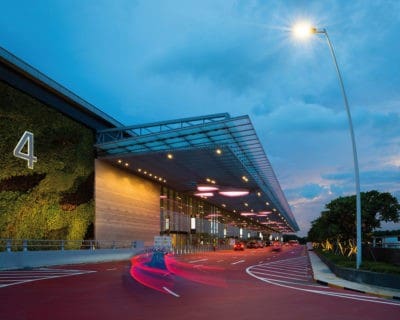
Changi Terminal 4 aims to create a more human-centric airport experience
Integral to Benoy’s efforts to streamline the travel experience was identifying who was using the airport, and what their objectives are, so that the design could allow travellers to cruise quickly through the airport, while also keeping amenities available for those looking to enjoy their visits.
“There are business travellers who are looking to minimise their time in the terminal and travel through as seamlessly as possible,” Kee explains. “For families or vacationers, however, the terminal experience marks the start of the holiday, so their touchpoints and the length of time they are looking to spend in the terminal increases. So we have to ensure the design works for each of these groups.”
While the design team’s aesthetic goals of blending simplicity and modernism to create bright, open spaces worked for all visitors, incorporating shops, restaurants and lounge areas into the travel experiences of up to 16 million visitors a year required Benoy to tap into experience won through designing major urban retail hubs such as Hong Kong’s Hysan Place and Shanghai’s iAPM mall.
For Benoy director Craig Menzies, the challenge was a welcome one. “Airports are more exciting than shopping centres in some ways, as they combine a variety of experiences in one place: art installations, local foods, international cuisines, educational spaces, multimedia displays and relaxation areas.”
In Terminal 4, this blend of public space and retail includes a heritage zone that traces the evolution of Singapore’s unique shophouses from their Straits Chinese roots through their use in the modern day, while offering visitors a chance to sample genuine local fare such as fried Indian roti, and laksa noodles.
Blurring the Boundary Between Life and Retail

Benoy director Craig Menzies
Walking through Terminal 4, visitors hardly encounter a shop door, despite the airport containing more than 80 retail outlets, the designers worked to remove barriers between travellers and retailers.
“Blurring retail boundaries by using the circulation space and limiting obtrusive storefronts allows passengers to move freely through retail areas,” Menzies noted. The architect, who is also part of the Benoy team designing the upcoming Jewel Changi Airport project, added that Terminal 4 also includes a broader mix of retailers in a single environment, from local to international, luxury brands and pop-up shops, which all cater to the e-tail mindset – where visitors can spend their time getting to know products which they may have already seen online.
Benoy has already been leveraging the lessons learned in designing Terminal 4 in its work on Jewel, a 134,000 square metre development at Changi Airport which is set to introduce new attractions, retail offerings and more when it opens next year.
“We know the role of the airport has changed and continues to change,” Menzies points out. “We learnt that by putting the customer experience at the heart of the design, we are able to harness and unlock the potential of these buildings. An airport is no longer a transport facility; it’s a destination to experience.”
Changi Terminal 4 in Images
- Providing greater visibility and clear lines of sight helps to make Changi Terminal 4 more welcoming to visitors
This sponsored feature was contributed by Benoy. All images are courtesy of Benoy Ltd. More information on Changi Terminal 4 is available here.

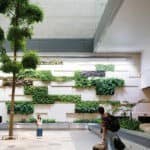
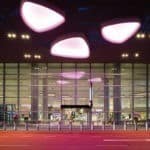
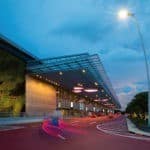
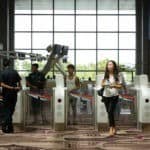
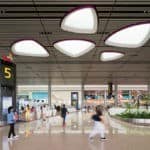
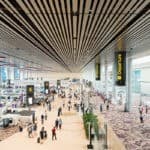
Leave a Reply